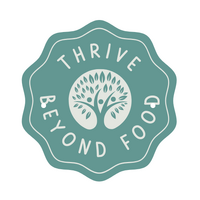
Have you ever caught yourself thinking, “If only I had this, I’d finally be happy”? Maybe it’s a certain amount of money, a goal you’re working toward, or even a feeling you’re hoping to achieve. It’s so easy to believe that happiness is just one step away—just beyond the next achievement or milestone. But have you ever noticed that once you get that thing, it doesn’t feel quite as life-changing as you expected?
That’s because happiness doesn’t come from just one thing. Real, lasting well-being is about so much more than one achievement, one goal, or one part of life. And science backs this up.
Why Happiness Always Feels Just Out of Reach
There’s actually a psychological reason why we always think the next big thing will make us happy, but it never quite lasts. It’s called the hedonic treadmill (Brickman & Campbell, 1971), and it’s the idea that we quickly adapt to positive changes and return to our usual level of happiness.
Think about it—have you ever really wanted something, only to feel “meh” about it after a while? That’s the hedonic treadmill in action. Studies show that even huge events, like winning the lottery, only give people a temporary boost in happiness before they go back to their normal emotional state (Diener et al., 2006). The same thing happens with smaller wins, too—getting a new job, reaching a goal, or even improving your health. It feels amazing at first, but then your brain just adjusts, and you start looking for the next thing.
So, if chasing external goals doesn’t bring lasting happiness, what does?
The Secret to Feeling Happier (Without Changing a Thing)
One of the most powerful ways to feel happier—without needing anything new—is gratitude. And I don’t just mean saying “thanks” every once in a while. I mean actively training your brain to notice the good in your life.
Scientists have found that when we focus on what we’re grateful for, it actually changes the brain. Gratitude activates the dopamine system, which is responsible for feelings of pleasure and motivation (Emmons & McCullough, 2003). And get this—people who wrote down three good things each day for just one week reported feeling happier for up to six months afterward (Seligman et al., 2005).
That’s huge! It means that instead of waiting for happiness to show up when something big happens, we can start creating it right now just by paying attention to the good that’s already here.
A More Balanced Approach to Happiness
Psychologists say that happiness isn’t about one thing—it’s about a mix of different factors that all work together. Martin Seligman, a well-known positive psychology researcher, came up with the PERMA model, which breaks happiness into five key parts:
- Positive emotions – Joy, gratitude, and other good feelings
- Engagement – Being fully immersed in activities that matter to you
- Relationships – Connecting with people who support and uplift you
- Meaning – Having a sense of purpose in your life
- Accomplishment – Setting and achieving personal goals
When we put all our focus on just one of these—like success, appearance, or financial security—we miss out on the bigger picture. But when we take a step back and nurture all areas of our well-being, that’s when happiness starts to feel real and lasting.
Finding Joy in the Everyday Moments
So what if happiness isn’t something we have to chase? What if it’s already here, just waiting for us to notice?
Instead of constantly reaching for the next big thing, we can start paying attention to the small, meaningful moments happening right now—a good conversation, a quiet moment of peace, a shared laugh. These moments are easy to overlook, but they’re where real joy lives.
As we walk this journey together, let’s remind ourselves: We don’t have to wait for happiness. It’s not hiding in some future achievement. It’s in the everyday moments, in the people we care about, and in the gratitude we practice. And best of all, we’re in this together, learning to find joy right where we are.
Claim my free gift to you—a preview of a lesson from my upcoming course about Happiness
References
- Brickman, P., & Campbell, D. T. (1971). Hedonic relativism and planning the good society. In M. H. Appley (Ed.), Adaptation-Level Theory: A Symposium (pp. 287-302). Academic Press.
- Diener, E., Lucas, R. E., & Scollon, C. N. (2006). Beyond the hedonic treadmill: Revising the adaptation theory of well-being. American Psychologist, 61(4), 305-314.
- Emmons, R. A., & McCullough, M. E. (2003). Counting blessings versus burdens: An experimental investigation of gratitude and subjective well-being in daily life. Journal of Personality and Social Psychology, 84(2), 377-389.
- Seligman, M. E. P., Steen, T. A., Park, N., & Peterson, C. (2005). Positive psychology progress: Empirical validation of interventions. American Psychologist, 60(5), 410-421.

Comments